 Your new post is loading...
 Your new post is loading...
Kaltura has long enabled service providers, universities, enterprises, and media companies to deliver video to viewers, with an extensible platform for publishing, distributing, and monetizing content. But for the most part, while it provided a player and CMS, it was up to those companies themselves to do the work of building their sites and readying them for video. Well, no longer. Kaltura is releasing a new product, called MediaGo, which is aimed primarily at the growing number of media partners who wish to quickly roll up an end-to-end video platform and customize it. This so-called “Netflix-in-a-box” portal enables those customers to quickly start serving up ad-based and subscription video services without having to build any infrastructure of their own.
Wyplay has announced Frog by Wyplay, an initiative which makes available the full source code of Wyplay's set-top box middleware and backend add-ons free of charge for evaluation and development purposes. The platform is already deployed to 10 million subscribers at Canal+, Belgacom, SFR and Vodafone. Frog by Wyplay encompasses all of the elements needed to build a foundation for pay-TV products (satellite, cable, IPTV, over the top, and terrestrial), including development kits for TV client devices, reference hardware, optional backend add-ons and companion apps for smartphones or tablets. Based on open-source technologies and open standards, the solution is described as agnostic with respect to chipset, delivery frontend and existing TV operator backend.
Cloud-based streaming and production services can be a boon to any large broadcaster, providing scale, power, and features inaccessible from on-premises facilities with minimal capital expenditure (CAPEX) and maintenance expenditures. Microsoft’s IIS Media Services, long a staple in on-premises servers of many broadcasters and large enterprises, has migrated to the cloud and is now available as Windows Azure Media Services. In this article, I’ll discuss the features of the service, how it was proven during the 2012 London Olympics, and the benefits achieved by two early adopters, NBCUniversal and the European Tour (a golf event).
In this post, we are going to dwell on the process of video platform design for ourTogether project. From the technical viewpoint, this project is remarkable by containing the entire content lifecycle, from its creation on mobile devices to distribution and viewing. While designing the platform, we sought to attain solution flexibility and cost-efficiency. With the new video platform you can receive, store and share videos. All video management tasks were implemented on Apple HLS. Problem statement Design a video platform to enable online broadcast. The platform can:
1) Record content from a variety of mobile devices (iOS/Android smartphones and tablets)
2) View content from a variety of devices (MultiScreening) – iOS / Android / PC. An important feature is to enable publishing via a wonky mobile connection, broadcast fault recovery, and broadcast pause. Also great is that in case of a connection failure the content shot is never lost, with broadcasting fully resumed after recovery. Here it is important to ensure that "It just works", regardless of unstable connection issues. In other words, this is a common video camera that can publish your recordings online whatever the bandwidth or connection quality.
Consumers have grown to expect rich online media experiences because the most successful players have set the bar for high quality interactions. As a result, media companies are under pressure to quickly and cost-effectively deliver content that is also engaged through interactive and personalized experiences. Most media companies have invested heavily in infrastructure that can deliver video across many platforms, while looking to integrate social media and more. To deliver the best experience, media companies and content distributors must focus on designing application architectures that are ever more scalable, reliable and high-performing in order to enable user experience innovation.
DENIVIP Media has been creating video platforms since 2008 (usually in conjunction with services, portals and applications). Over the 4 years of developing ad-hoc video platforms for different projects, we have accumulated a decent expertise and information on many hindrances that are almost inevitable in video projects. In this post, I would like to brief you on how we design video platforms and what drivers have to be taken into account when creating a new or upgrading an old video platform. Also, I would like to note major forthcoming trends in the development of video platforms foreeable for the near future.
The BBC Olympics sports broadcast service is one of the largest media events of 2012. It has brought the video service industry to a totally new level, earning for the 2012 Olympics the popularity of "truly digital games". In this context, it is critical to acknowledge the importance of expertise gained and leverage it in further growth. In this post, we are going to dwell into the project, its implementation, and valuable experience that you can apply to your own projects.
Database Plugins LLC. today announces the availability of two innovative products targeted at the Oracle marketplace. The Database Media-On-Demand Server provides specific support for the HTML5 <video> and <audio> tags as well as HTTP streaming of Flash videos. The Database Plugin Server and associated DBMPEG database plugin integrates the power, flexibility and feature support of FFMpeg with the Oracle Database. The innovation that sits at the center of this multimedia framework is the Database Plugin Server. The Database Plugin Server is a simple, effective mechanism that brings user-extensibility to the logical framework of a database. This allows for the inclusion of complex logic directly in the database. In this specific instance, the DBMPEG plugin integrates the FFMpeg toolkit with the Oracle Database. Programmers and systems architects are no longer limited by the incomplete native multimedia format support in the Oracle Database. By taking advantage of the advanced, extensible Multimedia Framework in Oracle 11g, the DBMPEG plugin can provide native support for all multimedia formats recognized by FFMpeg.
Tel Aviv-based startup Vidmind came out of stealth today and debuted its cloud-based TV solution, which lets operators, broadcasters and retailers essentially create a white labeled version of Netflix. The company provides an Android-based set top box that can be branded for any company, cloud infrastructure to build a streaming TV service, back-end management for operators, clients for multiple platforms including mobile tablet and PC, and built-in second screen and social features so viewers can interact around content. Vidmind was started by Danny Peled, the founder of video company GooMe, which developed apps for broadcast providers and counted Vodafone and Orange as customers. ”At the end of our time at GooMe we decided that we wanted to create a platform for OTT [over-the-top content],” Peled said. “We thought that there is big potential for a fully hosted solution for TV services.” The company lets retailers, broadcasters or content creators create a cloud-based video-on-demand (VOD) and live streaming hub, which customers can access on a subscription basis. More info : http://www.vidmind.com
Cloud services for media workflows go far beyond transcoding, and the pressure on pricing means that the battle between capital and operating expenditures will ultimately be won at the finance table... The cloud and its use to power digital media workflows is headlining many of the recent media-related announcements, and it is becoming increasingly difficult to parse through the myriad cloud messages to clearly identify what is real and what is simply noise. What is clear is that the cloud is rapidly evolving both in features and capacity in an attempt to address various technical and business issues that are prohibiting targeted verticals from adopting it. In this article I’m going to discuss those issues and point out key areas that should be considered when evaluating the various cloud offerings. READ ALSO THE REPORT ABOUT CLOUD VIDEO SERVICES @ NAB 2012 : http://blog.eltrovemo.com/711/nab-2012-ott-advancements-doubts/
Designed for broadcasters, webcasters, and content providers, the IPGuard is a seamless IP and MPEG-2 TS transport layer switching device that can convey MPEG-2 or MPEG-4/H.264 in SD or HD content. It delivers 1+1 redundancy with two parallel IP input sources and two mirrored IP outputs. When the system detects a failure on one input – such as no IP stream or MPEG-2 or H.264 transport stream failure – it automatically switches over to the other valid input to provide continual output. The IPGuard offers a bypass mechanism via solid state relays that creates 100% service availability in case of power outage. It is designed to provide an automatic 1+1 redundancy of network equipment that delivers services over IP – such as encoders, multiplexers, gateways, ASI to IP adapters, etc. Additionally, the IPGuard can also be operated to re-synchronize and re-align the same MPEG-2 stream that is carried over redundant IP-based networks. The latter introducing different network propagation delay, the IPGuard is able to re-align both IP streams to provide a seamless change-over between redundant IP streams.
White-label video publishing company and pioneer in TVE services, thePlatform today announced an advanced new suite of features, enabling operators to create new and highly tailored content packages and promotions. The new features enable pay TV providers to reinforce and extend the value of their current TV subscription packages across more devices.
thePlatform’s mpx system includes a central repository for metadata surrounding a video including categories, keywords, tags, asset types and more. This collection of data enables operators to easily create dynamic filters via mpx’s intuitive console to create any combination of Subscription Package. Once a package is defined, specific viewing rights can be assigned with enforcement by stream encryption or a DRM such as Microsoft PlayReady or Adobe Flash Access.
READ ALSO : http://www.videonuze.com/article/theplatform-envisions-tv-everywhere-with-customized-content-delivery
VSN has announced it will attend CABSAT, Feb. 28 – March 1, in Dubai. Promoting its new generation of broadcast software solutions, the company will showcase new versions of its products in the areas of News Production, Content Management and Distribution and Advanced Graphics.
Included in the Spider platform, VSN’s new Workflow Manager allows full customization of a TV channel’s different workflows, thus generating a fully automated production operative. The seamless integration with VSNIPTRANSFER to work in a distributed environment (WAN), and the combination of Web architecture with Windows and Mac OS platforms, results in a powerful distributed, multiplatform ecosystem for the news production and the content management and distribution.
VSNNEWS now features a set of new functionalities including the system’s integration with different social networks such as Twitter and Facebook. Also, the SOA interfaces with MAM solutions. The proposed architecture is completely scalable as it grows, because most of services are now centralized and operated by “workers,” no matter the size of the system and the number of lo-res and hi-res clients involved.
|
The reign of end-to-end OTT platforms is over, here comes the modular OTT Platform ! With SOA, FIMS, IMF and DASH, agility time has (almost) come... This is the report/sequel of Vimond's Industry Visionaries IBC2013 talk about “The Future of OTT Platforms: Is it Diversification or Standardization ?” with Eric Schumacher-Rasmussen, Editor of Streaming Media Magazine, and Nicolas Weil.
It takes a lot of confidence in the online entertainment market to devote two years and $20 million (£12.75 million) to the development of an end-to-end video platform for premium content. London-based Saffron Digital has done just that with Stage, which it describes as the industry’s first true end-to-end solution for premium OTT. It combines all the tools required to launch a multi-platform OTT entertainment service or UltraViolet storefront and is aimed at retailers, MSOs, TV broadcasters, mobile network operators and content owners that are seeking to launch new services or upgrade to the latest technology with the minimum of upfront investment. Stage encompasses a suite of products that includes MainStage for the creation of OTT services, MainStage UV for the creation of an UltraViolet storefront and BackStage, a custom content-management system (CMS). StagePlay is a device player that uses Saffron Digital’s own technology to control every key component of content delivery, ensuring the optimum user experience. StageCraft provides automated ingest, transcoding and encryption of content. - See more at: http://mesalliance.org/blog/2013/08/22/saffron-digital-delivers-stage-ott-platform-to-ibc-in-amsterdam/#sthash.iRnmHj5C.dpuf
This post is the result of a sort of challenge. The objective is to create an architecture to generate, manage and deliver HTTP streaming videos using free and/or open-source tools and/or applications. It need to answer to many questions : tools must be open source or free; reliability of the platform and the ability to scale up quickly. The architecture can be split in two parts : the content preparation and the delivery. I will expose an overview for each part of the architecture. Then I will list differents tools you can use. To finish, I will give you in details the architecture I will choose to deploy. But to realize this, few or some developments can be required, the language you will use, will be your choice. The operating system will be on Linux.
Vidmind, a pioneering End-to-end Cloud TV technology provider for operators, broadcasters and retailers, announced today its partnership with Media Excel, an innovator of adaptive bitrate, multi-device transcoding for multiscreen video delivery. Media Excel was chosen by Vidmind not only because of its powerful transcoding solution which produces superior quality video in multiple formats but also because of the adaptability of the Media Excel platform. Media Excel’s HERO product can be operated as a local service or on a Cloud service. This allows Vidmind to run the encoding process at the customer’s headend but manage all services through the Cloud.
One of the biggest challenges within the OTT and TV Everywhere space today is how to ensure a simple ingest workflow when importing media assets from various content providers. For many service providers with a large media assets library, the ingest workflow can be a major headache with different processes for dealing with multiple video input formats, metadata formats, subtitle formats, applying DRM encryption and transcoding for multiple platforms.
In order to meet these challenges Xstream is now launching a new 'Ingest Service' that greatly simplifies the ingest of media assets and offers a completely transparent process to fit into any media rollout. Additionally, the Ingest Service collects content from multiple sources with ease with a minimum of human resources needed, enabling customers to reduce time spent on setting up ingest workflows, decrease time to market and scale their offerings faster, better and wider than ever before.
The future is live. The future is real-time. The future is now. That's the hype anyway. And as it has a habit of doing, the hype is slowly becoming reality. We are seeing live searches, live tweets, live location, live reality augmentation, live crab (fresh and local), and live event publishing. One of the most challenging of all live technologies is that of live video broadcasting. Imagine a world in which everyone becomes a broadcaster and a consumer of video streams, all in real-time (< 250 msec latency), all so you can talk and interact directly without feeling like you are in the middle of a time shift war. The resources and the engineering needed to make this happened must be substantial. How do you do that?
Or indeed a functional specification or project plan. Here are 10 things to consider including your content, stakeholders and audience. If you're writing a requirements document, functional specification or project plan for any new product or service you'll probably be thinking about scope, risks, manpower, technical resources, availability of equipment and third-party engagement. At the same time you'll be looking for quick wins like re-using content and longer-term gains like perhaps streamlining internal work processes. Clearly, there's a balance to be struck; how much can you achieve in time and on budget? But what are the specific issues you face when building a video service? I've worked on four big video projects over the past seven years - at NBC Universal, Virgin Media, ITN and Trinity Mirror - and here are some of the things I've had to consider from a logistical and technical (rather than aesthetic) perspective.
Cisco revealed today its expanded and enhanced content delivery network portfolio, branded as the Cisco Videoscape Distribution Suite (VDS). Cisco VDS is an open platform that delivers video content across multiple screens, multiple protocols, multiple applications and multiple networks. VDS serves as the network distribution engine behind the Videoscape architecture. It is a complete, interoperable and holistic solution that bridges cloud and network functionality. Highlights: -- With the introduction of VDS, Cisco is the only company in the industry providing a complete product suite with all the capabilities needed for third-generation content delivery. In addition, Cisco has integrated significant enhancements to the current Videoscape Distribution Suite Portfolio: -- Cisco VDS hardware -- Cisco VDS Service Manager (VDS-SM) -- Cisco VDS Television (VDS-TV) -- Cisco VDS Internet Streamer (VDS-IS) More on same topic : http://bit.ly/Sx3glo
Now that you intensively crawled through part 1 of this blog-post and asked yourself all the right questions intended to avoid common OTT-traps, we can safely presume that you are ready to spend some (or a lot of) time and money on launching your own multiscreen OTT service. So it’s definitely time to choose your bricks, mortar and trowels... As multiscreen OTT/TV Everywhere offers do proliferate while each video tradeshow approaches and connected devices multiply, it’s difficult to monitor all of them and get a 100% accurate idea on who’s got the best offer. Basically your ideal technical partner will most likely be a unique target depending on your background (telco/content owner/TV channel…), your needs (target devices, business models, time to market…), your workflow constraints (CMS, billing, deployed transcoding engines, already deployed apps…) and your budget. Nevertheless, what I tried to do first is to isolate a list of actors whose offer is end-to-end and sufficiently versatile to cover the most common use cases and devices, then provide a complementary list with actors who provide less information but are also known in this market, and then wrap up the post with a bunch of ideas on how you could DoItYourself with less integrated/locking-in solutions. This way, you will end-up with a complete panorama of available technical solutions in mind.
VMs have enabled a new public utility of cloud-based computing, providing IT resources that are charged based on usage. This new utility has transformed the way IT companies deploy applications hosted on x86 server architecture, allowing them to quickly deploy new software and services. More recently, vendors of broadcast technology have extended their use of the x86 Intel server architecture as they move towards workflows based on files. In the early days, it was back-room systems such as Traffic and Scheduling that made the most use of an x86 architecture. As IT servers become ever more powerful, many of the broadcasting tasks, which historically have been handled by unique proprietary DSPs, are now able to be carried out, using software, on standard IT servers. If we look at an entire workflow — ingest, transmission and uplink — of a typical publisher-broadcaster, we will find IT servers running applications at every stage.
FLUMOTION and VSN will present at NAB 2012 in Las Vegas, April 16-19, a new solution to simplify and integrate linear TV with connected devices for live and on demand content. This new solution is aimed at broadcasters to help them increase and retain audience, monetize their content, analyze audience behavior and improve user experience. This enables them to avoid costly investments and duplicated processes. From the technical point of view, the solution is structured according to a perfect synchronization that automates and simplifies the workflow and management of live and VOD contents : • VSN’s play-out system receives the data from the traffic or scheduling department and manages it according to its Internet broadcasting rights.
• According to the respective rights, VSN manages the encoder of the live streams by either stopping the stream or switching to broadcasting exclusively online, according to the Internet broadcasting rights of the content.
• Simultaneously, the recording system generates a file without ads for VOD and catch-up, adds the metadata and synchronizes the content with the Online Video Platform of Flumotion.
• VSN’s software sends the EPG to the Video Platform indicating which live contents with Internet broadcasting rights will be broadcasted next. • According to the information received from VSN, Flumotion’s Video Platform manages the different streaming technologies and format, geographic restrictions, content usage rights, content monetization policies, allowed domains and streaming technologies (HTML5 or Flash) to guarantee content integrity and multi-device compatibility for desktop, smartphones and Connected TVs.
Azuki announced the next generation OTT video delivery solution framework that seamlessly extends service providers’ managed set-top-box services to multi-screens, at home and on-the-go, with equivalent user experience and zero impact to existing DOCSIS and IPTV infrastructure.
With Azuki, service providers can ensure unmanaged networks behave and perform like managed networks, with no disruption to existing video operations, enabling service providers to capitalize on multi-screens and TV Everywhere initiatives, with: - Anywhere, anytime, any device session-shifting - End-to-end entitlement control per subscriber, device and content - Dynamic multi-screen ad insertion - Extended HTML5 compatibility for monetization and security - Detailed consumption analytics and metrics from all device types
Azuki manages OTT video delivery by simplifying and automating the process of normalizing and unifying media preparation, adaptive streaming, digital rights management (DRM), entitlement enforcement, analytics and monetization - including ad-insertion, across all consumer-owned devices.
|



 Your new post is loading...
Your new post is loading...




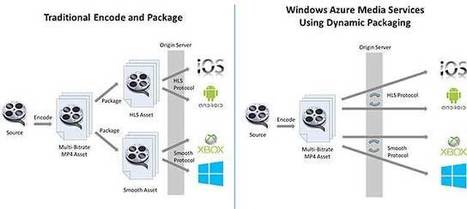


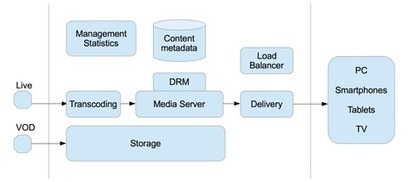

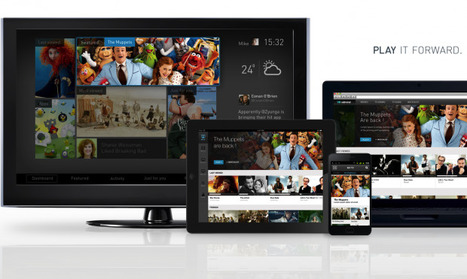


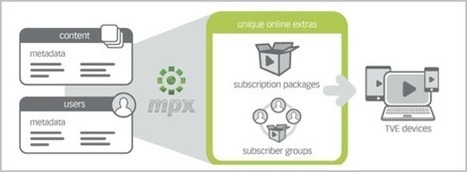
![[IBC 2013 Talk] The Future of OTT Platforms | Video Breakthroughs | Scoop.it](https://img.scoop.it/QcV918WTWh5B0iROqlVSxDl72eJkfbmt4t8yenImKBVvK0kTmF0xjctABnaLJIm9)
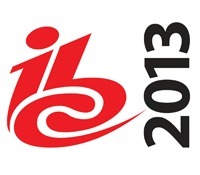

![Media Excel and Vidmind partner to provide Cloud TV service [PR] | Video Breakthroughs | Scoop.it](https://img.scoop.it/AqZV4JZmq63ljIKFZt0wbTl72eJkfbmt4t8yenImKBVvK0kTmF0xjctABnaLJIm9)
![Xstream Launches new Ingest Service [PR] | Video Breakthroughs | Scoop.it](https://img.scoop.it/s7hief4cxI20p7nahpyg5Tl72eJkfbmt4t8yenImKBVvK0kTmF0xjctABnaLJIm9)


![Cisco's 'Videoscape Distribution Suite' Revolutionizes Video Content Delivery to Multiple Screens [PR] | Video Breakthroughs | Scoop.it](https://img.scoop.it/W0kbhecc-BIEWNlZDC1YPTl72eJkfbmt4t8yenImKBVvK0kTmF0xjctABnaLJIm9)
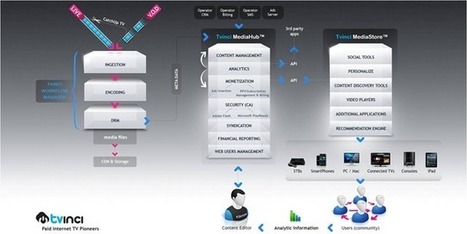

![The collaboration between Flumotion and VSN simplifies and automates live and VOD broadcasting for all connected devices [PR] | Video Breakthroughs | Scoop.it](https://img.scoop.it/FiBs_UZNT5iQ3wzdT2PoKDl72eJkfbmt4t8yenImKBVvK0kTmF0xjctABnaLJIm9)
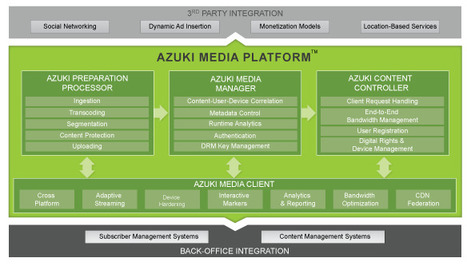





Charity tube is the leading social networking site today.More people are running to charity tube to post free videos and watch free videos than posting on you tube. Try posting at charity tube and you will never leave. http://www.africatube.net/ More visitors and more video views. Don't take our word for it, try it. Post one same video on youtube and put it on http://www.africatube.net/ and return ater five hours and compare the viewers rate and decide for yourself. Create your very own group or forum and control who watch it and invite everyone to watch the video. Above all, post video in English or in any language and viewers can watch video description in their own language. Try it and let us know your experience. Above all it is absolutely free like youtube